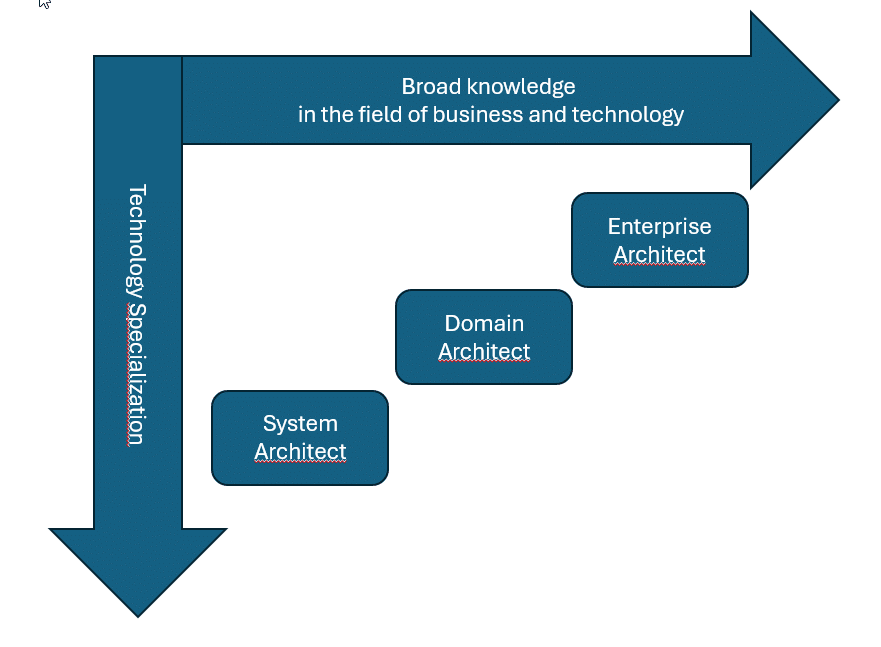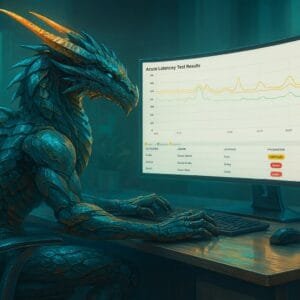How do you become an IT architect and what do you need to learn to fulfill this role and “earn” this “title”?
Table of Contents
Understanding the Role
The title “IT Architect” is given to professionals like Enterprise Architects, Cloud Architects, Software Architects, and Business Architects. The role varies by company size and specialization, including System, Domain, and Enterprise Architects.
Getting the title
Depending on the size of the company, it may be more or less difficult to reach this level, and IT architects are divided according to their technical orientation, but also according to their role in the company. Often, the architecture in the company is further specified into system, domain and enterprise architects. In this case, system architects are more specialized than enterprise architects, but this does not make them “higher” or “lower” in value.

Becoming an IT architect by taking an exam
There is no traditional training for IT architects. However, there are some opportunities to obtain an architectural certification through an exam. Most vendors offer such an architectural certification, although these are usually system architect certifications with a technical focus. An example of this is the Microsoft Azure Solution Architect.
A broader certification is offered by The Open Group. This certification is highly prestigious, not easy to obtain and is recognized by many organizations. The Open Group offers four specializations (Business Architect, Digital Architect, Enterprise Architect and Solution Architect), each with different levels of qualification.

Developing Skills
Starting with a Master’s degree that includes both software and business topics can be beneficial. IT Architects need a broad skill set, often visualized as a T-profile—deep expertise in one area and broad knowledge across others.
You can learn to be an IT architect
It is very rare for someone to start as an IT architect after graduating. It is helpful to start your career with a master’s degree, and it is helpful if it includes not only software but also business topics.
An architect develops the necessary technical experience over time. It is important for an IT architect to think outside the box and broaden their knowledge. This is often depicted as a T-profile and looks something like this.

This profile shows that I have a very deep understanding of Azure (dark purple) and an understanding of the other areas. It is meant to show that you are an expert in one area, but have a broad base. My profile is a bit broader than shown here and allows me to talk to application owners about their application and a migration to the cloud. The T-profile shows that I can design the new solution in Azure, but also do understand enough about Active Directory and Firewall / Network to map the existing and necessary data flows in the network.
How can you learn this? It always helps to be enthusiastic about IT and to want to understand new things. Over the years and in different roles, you get to know new techniques. For example, a network engineer will explain the new 2nd generation Checkpoint firewall, the OSI model or TCP & UDP ports. If you apply and deepen your knowledge of these things, a Netware Novell 4.x administrator will become a Windows administrator over time and then a cloud architect.
If you are interested in this topic, feel free to contact me. I also work as a trainer in this area and offer our own modern view of agile architecture at CGI with RCDA.
Soft Skills and Mindset
My experience shows that the work of an IT architect consists of 50% architecture work, i.e. design, modeling, prototyping, documentation, etc. The other 50% is gathering information from users and documentation, which then leads to architecture decisions that are then communicated again. Often, it is also about consensus building, mediation, interviews or abstraction so that the information is understood by other stakeholders.
So 50% of the time is spent on soft skills. These soft skills are about self-confidence, charisma, communication skills and the ability to move in different environments within the company. This means that you adapt your communication style and the technical details you convey to suit the person you are talking to. There is an excellent book on this topic by Gregor Hohpe called “The Software Architect Elevator” that I can recommend to anyone. Even non-software architects can deepen their knowledge of IT architecture and do something for the software development part of their T-profile.
Life experience and a healthy curiosity will take care of the soft skills, i.e. here you can only accelerate access to a limited extent with a lot of specialist literature. Workshops offered in the company for “leaders”, “team building” or even GDPR topics, for example, should be used. Communication in the workshop and networking with other participants in the environment help on the way. If you want to read a book on the subject, I recommend “Talking to Humans” by Giff Constable. My favorite question for executives and conversation partners comes from this book: “If you had a magic wand, what problem would you solve with it?”
Conclusion
Curiosity, communication skills, technical enthusiasm, and the ability to explain complex solutions clearly are key traits of successful IT Architects. This format aligns with the technical focus of your blog while providing valuable insights into becoming an IT Architect.
Becoming an IT Architect requires time and experience. Having a higher level of education will definetly help and if you have that opportunity, take it. Some of the best architects I know haven’t studied, so there is another and most likely longer and painful way. But if you want to become an IT Architect you should never give up and keep learning.
You can learn about IT Architects in my Blog here.






